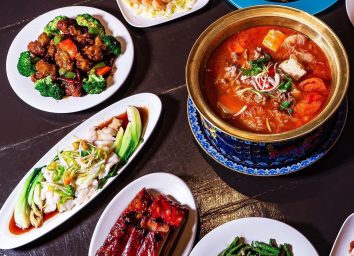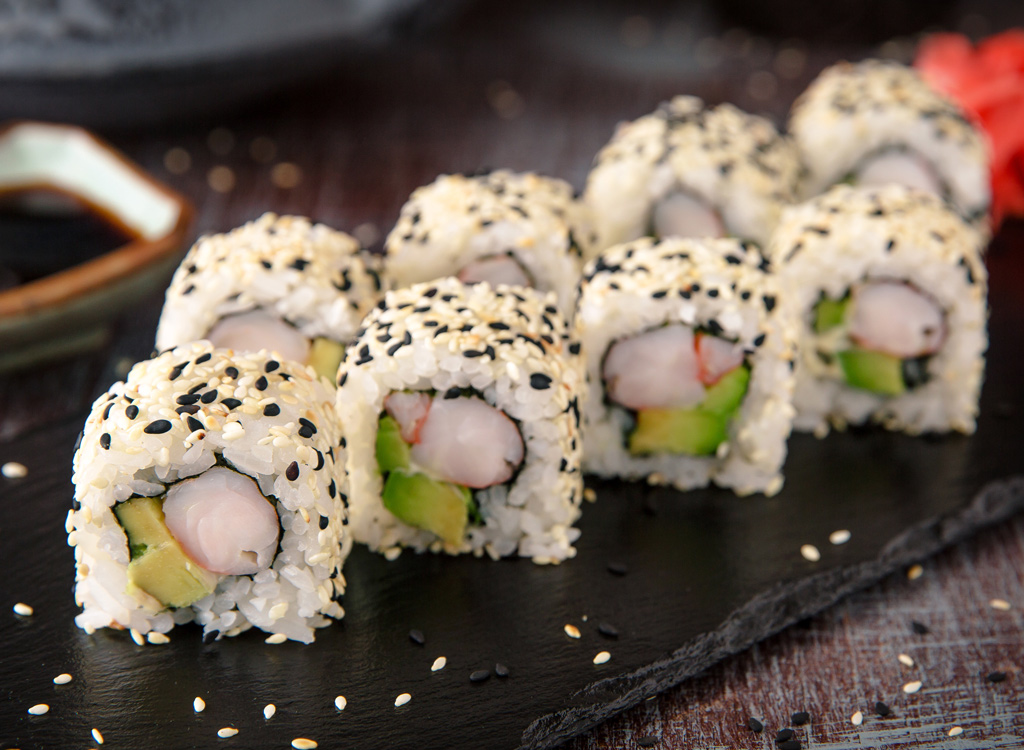
When you think of Japanese food, what do you normally think of? Maybe sushi and teriyaki-drenched chicken, or how about sitting at a large table with people you don’t know with a chef that cooks your meal in front of you? Like many other foods from around the world, America has changed and tweaked dishes that are traditionally Japanese to make them fit the American palate and lifestyle. You likely won’t find similar creations in Japan.
“Most often a set meal that combines white rice, miso soup, and main ingredients uniquely called side dishes are eaten daily,” says Chef Akinobu Matsuo, director of culinary at Marugame Udon. The result of playing with food? Pseudo-Japanese cuisine that’s not actually eaten in Japan.
In fact, sushi isn’t eaten in Japan every day. “It’s a misconception that Japanese people eat sushi every day. Japanese people eat sushi for celebrations or as a special event,” says Manabu “Hori” Horiuchi, executive chef at Kata Robata in Houston.
Here are some more of the Americanized Japanese foods that no one actually eats, or eats very differently in Japan, according to Japanese chefs, experts, and locals.
California Rolls
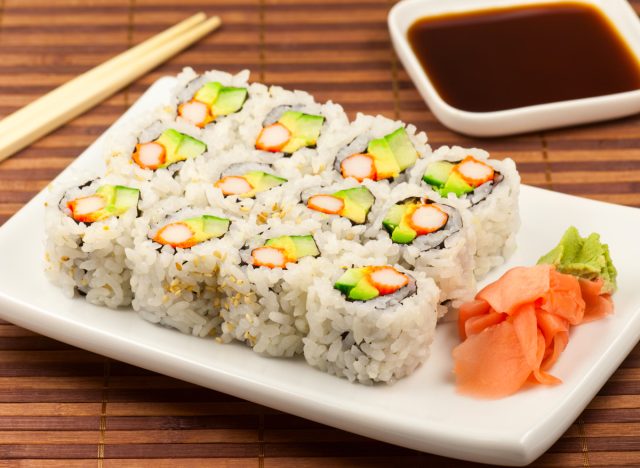
This probably isn’t a shock, but California rolls didn’t originate in Japan. The American favorite actually came about in the 1960s at Tokyo Kaikan, a restaurant in the Little Tokyo area of Los Angeles. As the story goes, the chef at the restaurant was looking for a replacement for tuna and used avocado and cooked crab to give the roll seafood flavor without actually using raw fish, which most Americans were not comfortable with yet.
Sunica Du, an Asian designer & illustrator, and the website owner of SunicaDesign.com, who has lived in both the U.S. and Japan says this is a common misconception. “In Japan, sushi is all about simplicity and letting the fish shine. You won’t find any spicy tuna or California rolls there.” Those are American inventions, she says. “In spite of that, I still enjoy some of the unique sushi rolls here in America, like the ones with avocado or cream cheese.”
Tempura
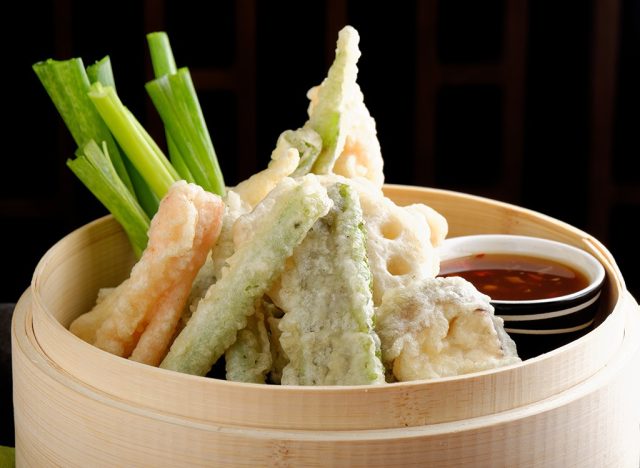
Tempura, at least the way Americans consume it, is also not a common dish in Japan. Victoria Yap, the founder and editor-in-chief of Honest Food Talks, says that while tempura is a dish that is often associated with Japanese cuisine, its preparation and presentation in the U.S. can differ significantly from that in Japan. “In Japan, tempura is typically served as a simple dish, with just a few pieces of shrimp or vegetables lightly battered and fried,” says Yap. “In the United States, tempura is often served as part of a larger dish, such as a sushi roll or a bowl of rice.”
Sweetened Green Tea
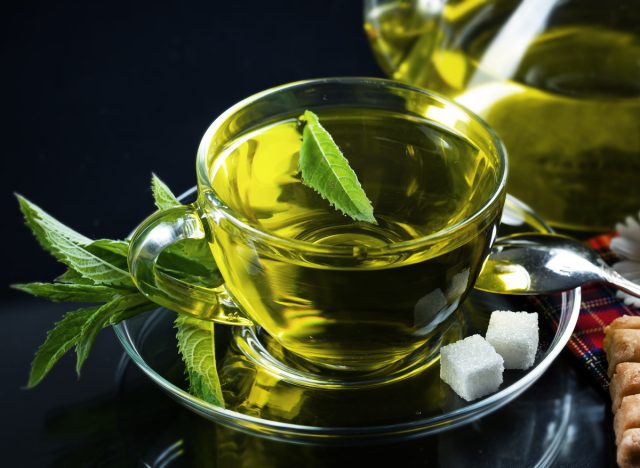
Green tea, or matcha, is a trendy ingredient that Americans will add to just about anything thanks to the impressive list of health benefits and the deep grassy flavor. But Japanese people never drink sweetened green tea. According to Matsuo, “Japanese people do not add sugar to green tea. Rather, they prefer bitter tea.”
Teriyaki Sauce
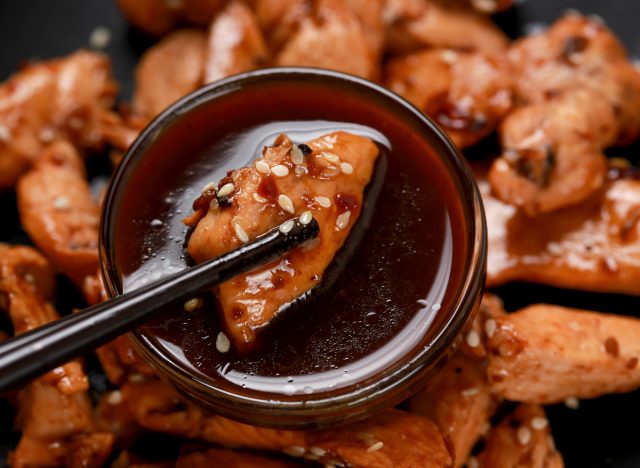
Another sugar-filled ingredient that’s never found in Japanese pantries is commercial teriyaki sauce. This thick brown sauce is often ladled over chicken, steak, vegetables, and anything else Americans can think of, but in Japan, it’s rarely used or would be unrecognizable.
Matsuo explains that it’s too sweet for the Japanese palette. “In Japan, teriyaki is a term used for the process of roasting chicken or pork, and very seldom includes a sauce.” Yap agrees, saying, “Teriyaki sauce is used in Japanese cooking, but it is not typically used to flavor chicken. Instead, teriyaki is more commonly used as a sauce for fish or meat dishes, and is usually made with soy sauce, mirin, and sugar.”
Hibachi Restaurant Offerings
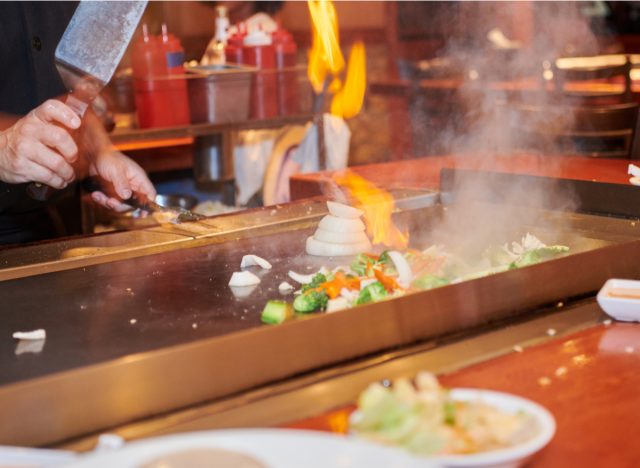
In America, hibachi restaurants are a staple in most communities. Diners sit around a flat griddle with other people they do not know, while a chef prepares their meal of steak, shrimp, chicken, vegetables, fried rice, noodles, and other American favorites. But in Japan, the hibachi-style grill is used to make okonomiyaki and monjayaki, which are savory pancake dishes made from wheat flour batter. The two dishes have toppings and other ingredients mixed in like cabbage and sprouts to make a more filling meal.
Spicy Fish Sushi Rolls
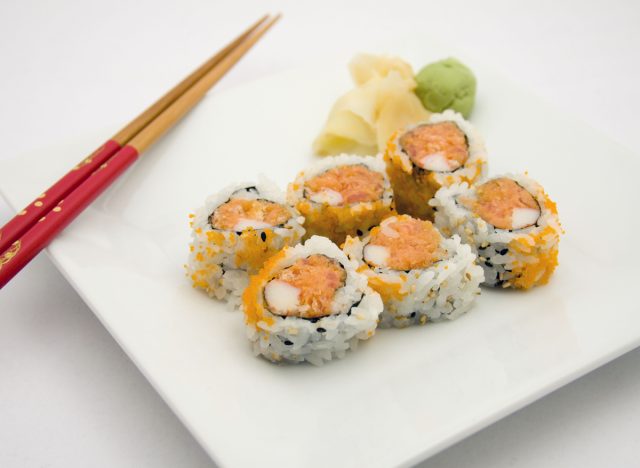
In Japan dishes are made with very little spice. So any sushi rolls that have ingredients like spicy tuna, spicy yellowtail, or spicy crab aren’t served. “There is very little spice in Japan,” says Horiuchi. Instead, Japanese people prefer to eat sushi with just a few ingredients such as seaweed, raw fish, and vinegared rice.
Sushi Sauces and Extra Ingredients
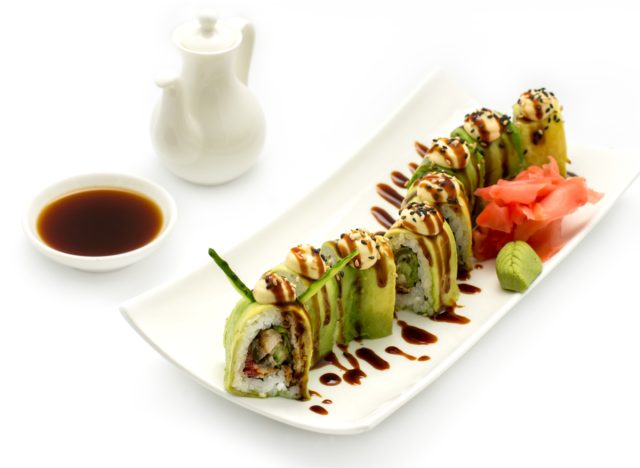
American sushi is often served with a ton of extra ingredients like spicy mayo and eel sauce. In Japan, the sauces are frivolous ingredients that are not added to sushi. Extra toppings like avocado, mango, crunchy bits, and tobiko are also never added in Japan.
A version of this story was originally published in August 2022. It has been updated to include new information.

